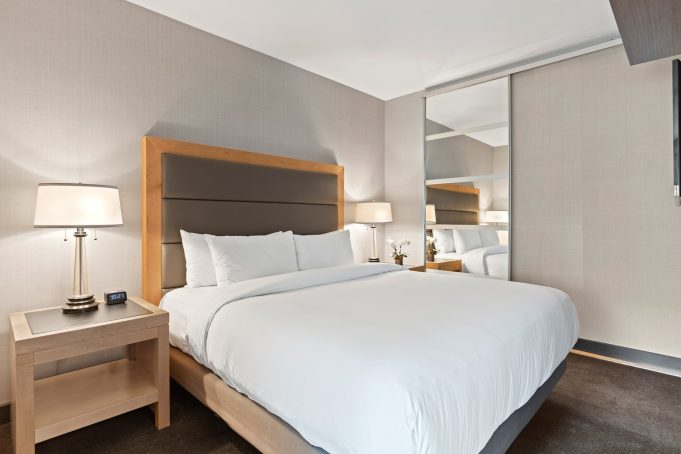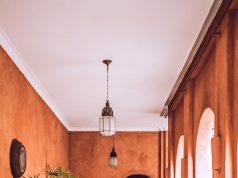The Evolution of Built-In Wardrobes
The modern built-in wardrobe, standing as the evolutionary successor of the antique armoire, embodies a transformative shift in personal storage. It reflects the dynamic spatial demands of contemporary society, and its journey from the antiquated standalone closet to a sleek, integrated unit eloquently articulates our changing lifestyles and tastes. Embedded in its design and purpose is a story of adaptation, an account of transitioning from bulky, obtrusive furniture to sleek, hidden storage solutions seamlessly blending with room architecture.
The Synthesis of Functionality and Aesthetics
Built-in wardrobes epitomize the beautiful confluence of functionality and aesthetics. They offer more than just a storage solution—they morph into influential design elements that enhance the room’s aesthetic appeal. Their unique quality lies in their chameleon-like ability to blend with their surroundings, providing storage without disturbing the harmony of the room. They not only organize belongings efficiently but also contribute to the overall interior design, making them a functional and fashionable choice for modern living.
Advantages and Factors to Consider
The built-in wardrobe is a triumphant manifestation of two critical design principles—customizability and space optimization. Tailored to specific needs, they offer an organized sanctuary for everything, from clothes to accessories. Especially in the age of compact living spaces, these wardrobes are heroes of spatial economy, exploiting vertical space to offer expansive storage without encroaching upon the room’s floor area.
However, choosing a built-in wardrobe isn’t a decision to be taken lightly. Factors such as the available space, preferred design, material durability, and the wardrobe’s harmony with the room’s existing aesthetics play crucial roles in the decision-making process. Moreover, financial considerations, such as budget and the value added to the property, also require careful deliberation.
The Green Quotient and Future Trends
The wave of sustainability sweeping across industries has found resonance in the world of built-in wardrobes. The shift towards eco-friendly materials and sustainable manufacturing processes reflects this growing consciousness. Alongside, technology is leaving its indelible mark, transforming traditional wardrobes into modern, tech-infused storage spaces. Automated lighting, sensor-guided drawers, and soft-closing mechanisms are just the beginning. Future trends point towards smart wardrobes that can auto-adjust internal compartments based on stored items’ size and use Internet of Things (IoT) technology for content management.
Installation, Maintenance, and Value Considerations
The journey to owning a built-in wardrobe doesn’t end with selection; installation and maintenance are equally critical. The choice between DIY installation and professional services depends on individual skill, budget, and time constraints. Furthermore, routine care and maintenance, such as regular cleaning and prompt repair, ensure the wardrobe’s longevity and optimal functioning.
The initial investment in a built-in wardrobe might seem substantial, but one must evaluate it against the long-term value it offers. Aside from providing efficient storage and enhancing room aesthetics, a well-designed built-in wardrobe can also enhance the property’s marketability, potentially promising a significant return on investment.
Case Study and Psychological Benefits
A case study of a small apartment beautifully demonstrates the transformative power of built-in wardrobes. The strategic installation of a custom wardrobe changed the apartment from a cluttered, cramped space to a chic, organized living area.
Beyond the physical transformation, an organized wardrobe also offers significant psychological benefits. It contributes to a sense of control and order, reducing stress levels. A well-organized wardrobe can make daily routines more efficient, saving precious time in the morning rush and indirectly enhancing productivity.
Cultural Influence and Unique Designs
A global perspective of built-in wardrobes reveals an intriguing mix of cultural influences and design variations. From the minimalist aesthetics popular in Japan to the intricate craftsmanship characteristic of India, built-in wardrobes have shown remarkable adaptability to local tastes and architectural styles, testifying to their versatility and global appeal.
The Timeless Appeal of Built-In Wardrobes
In conclusion, the built-in wardrobe has irrefutably etched itself into the annals of interior design. With its seamless blend of functionality, aesthetics, and adaptability, it stands as a testament to our evolving storage needs and aesthetic preferences. As we move forward, these wardrobes promise to continue resonating with our desires for organized, stylish, and sustainable living spaces.














